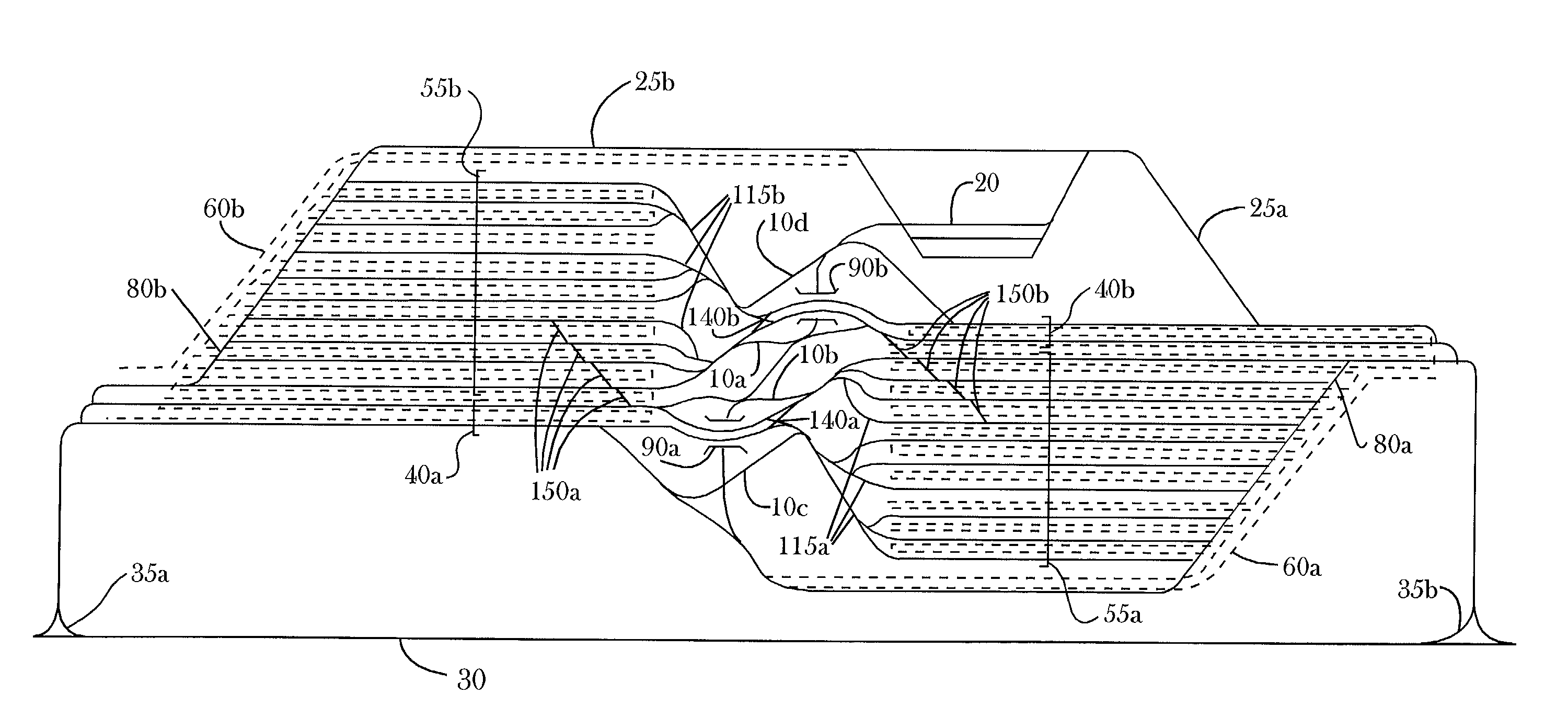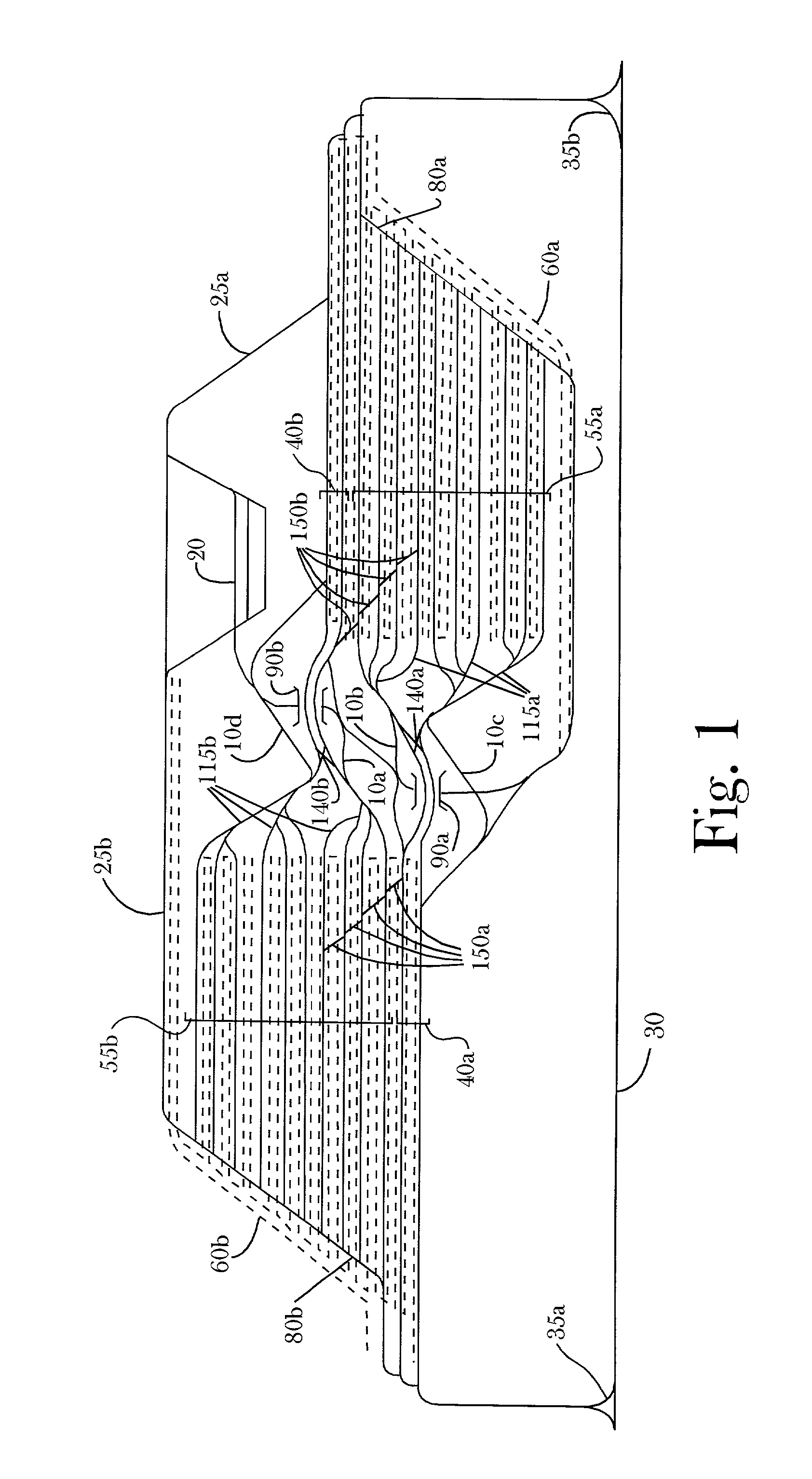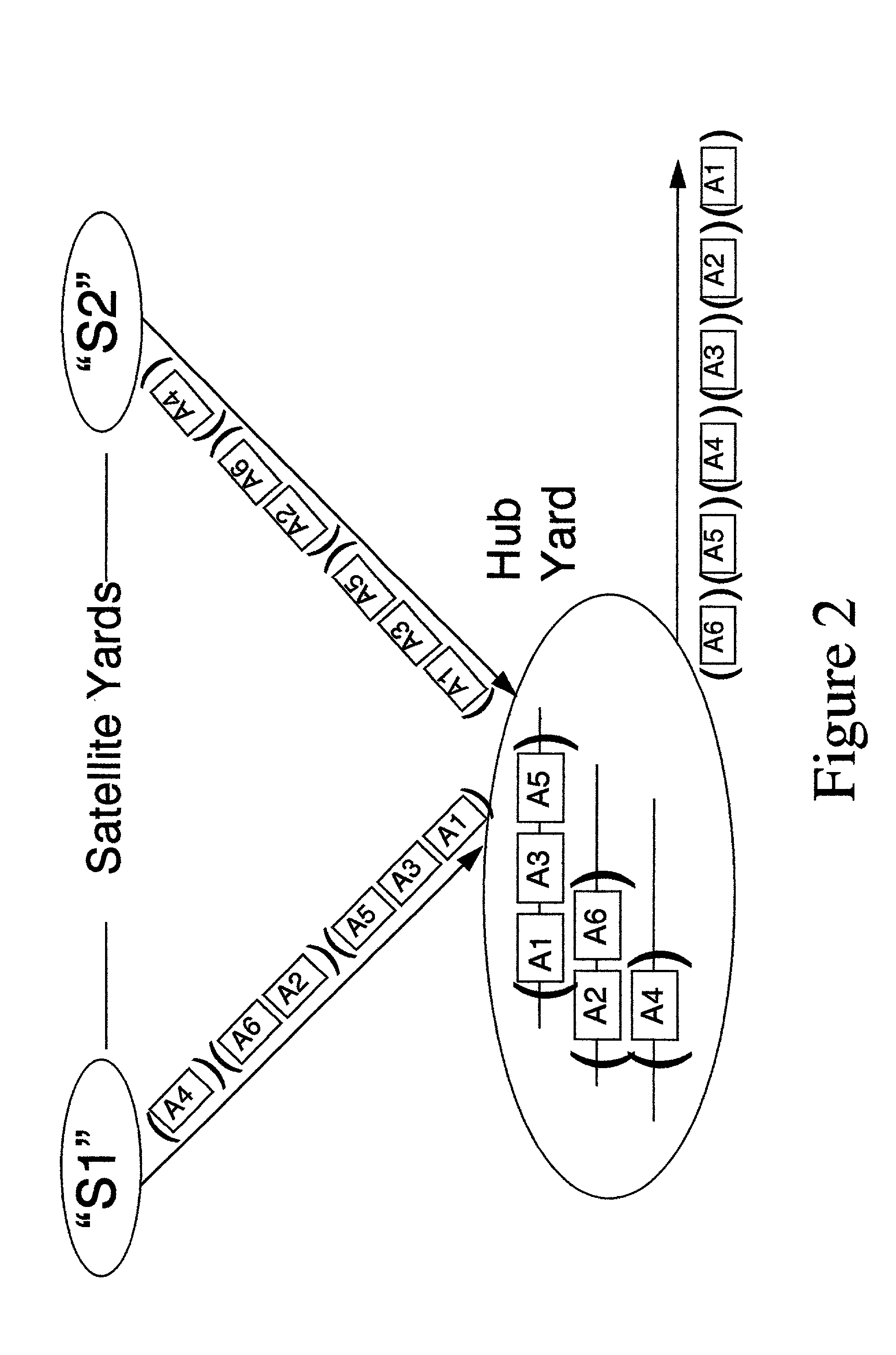High capacity multiple-stage railway switching yard
- Summary
- Abstract
- Description
- Claims
- Application Information
AI Technical Summary
Problems solved by technology
Method used
Image
Examples
Embodiment Construction
[0038]
1 Reference Numerals In Drawings 10 Hump Escape Track 20 Locomotive Servicing Facility 25 Running Track 30 Main Line Track. 35 Wye Track 40 Hump Lead Track 55 Classification Tracks with Retarders 60 Cart Road between each track 80 Arrival / Departure end 90 Hump 100 Eastbound Receiving / Westbound Departure Switches 105 Middle Tracks 110 Westbound Receiving / Eastbound Departure Switches 115 Sorting Switches 120 Dowty retarder units 125 Rails 140 Scizzors Crossovers 150 Crossovers between Classification Tracks
[0039] FIG. 1--Preferred Embodiment
[0040] The preferred embodiment for a railway classification yard consists of at least two subyards "a" and "b", as shown in FIG. 1, where each subyard is patterned after the yard of FIG. 10 in the parent application. Subyard "a" consists of a double lead track 40a, means for accelerating cars 90a (normally a gravity hump) connected by switches 115a to classification tracks with cart paths 55a. These classification tracks 55a are in turn con...
PUM
 Login to View More
Login to View More Abstract
Description
Claims
Application Information
 Login to View More
Login to View More - R&D
- Intellectual Property
- Life Sciences
- Materials
- Tech Scout
- Unparalleled Data Quality
- Higher Quality Content
- 60% Fewer Hallucinations
Browse by: Latest US Patents, China's latest patents, Technical Efficacy Thesaurus, Application Domain, Technology Topic, Popular Technical Reports.
© 2025 PatSnap. All rights reserved.Legal|Privacy policy|Modern Slavery Act Transparency Statement|Sitemap|About US| Contact US: help@patsnap.com



